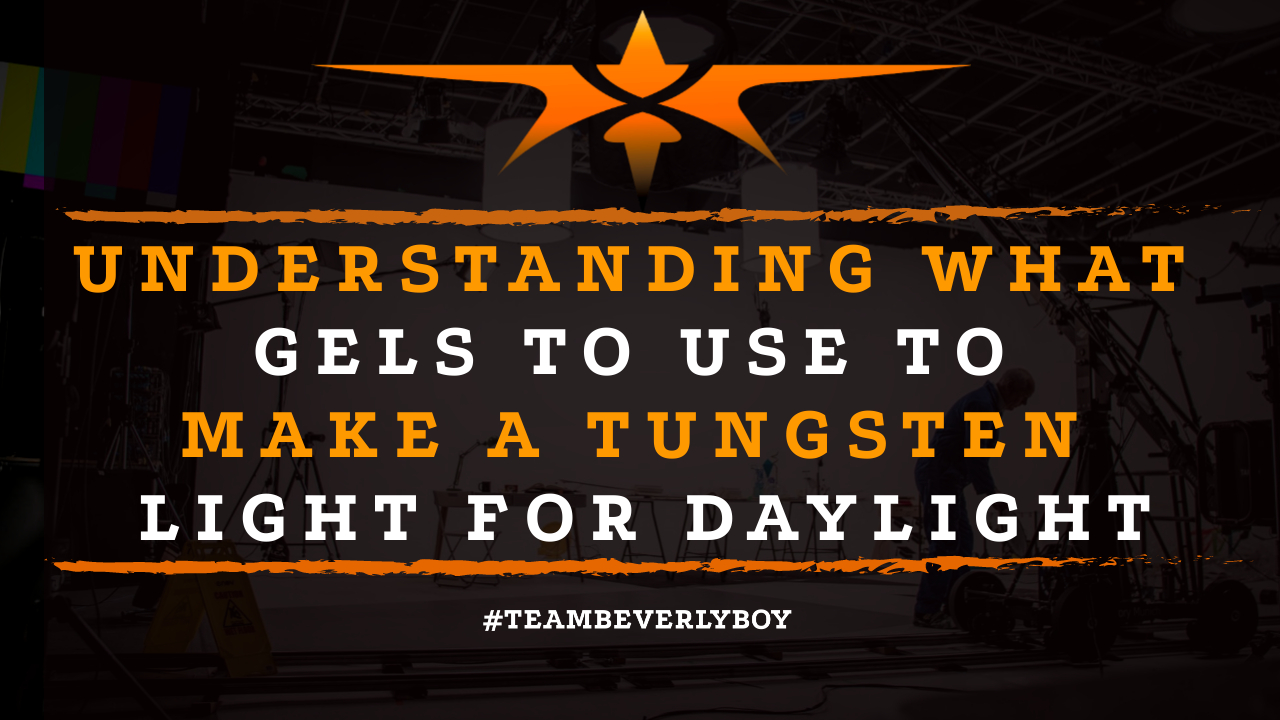
Understanding What Gels to Use to Make a Tungsten Light for Daylight
As a cinematographer, manipulating light and color is a big deal. With so many different lights, gels, and options to choose from, it can be hard to figure out what you really need and what you can wait on, especially if you’re operating on a low-budget and just getting started. A common challenge that comes up is the need to adjust tungsten lighting so that it appears like daylight. Many aspiring videographers find understanding what gels to use to make a tungsten light for daylight challenging.

Balancing the lighting that you’ve got so that your subjects don’t appear washed or otherwise sickly is incredibly important in videography. Tungsten lights, as well as many other types of incandescent bulbs can give off a warm, orange tone and despite what you may think, this really isn’t anything like daylight.
In fact, daylight is more of a blue tone, similar to the sky. In order to create a balance that works and doesn’t produce some strange or otherwise unwelcome colors, you’ve got to figure out what gels to use to make a tungsten light for daylight.
What Color is Daylight?
Daylight doesn’t technically have a “color” but it does have a hue. It tends to be a natural balance from the sun that appears a soft bluish tone. Daylight is bright, too. However, daylight isn’t all great.
The use of natural daylight can result in continuity issues for you as the light that comes off the sun varies from day to day, and the light that comes at various times of the day is different too.
Even basic “Daylight” has several different colors or styles of lighting with various shades.
For example:

- Golden Hour – this is the tone that appears in the early hours of the morning just as the sun has come up or just before it goes down. While it’s prime time for film and video, it’s incredibly limited and never the same from one day to the next.
- Blue Hour – similar to golden hour, but appearing just before the sunrise or just after sunset, again never the same, but this is a level of low ambient lighting from the sun in which everything is a pale blue.
- Mid-day or Afternoon – another form of daylight that can come in various tones and light levels, especially if cloud cover appears or any other changes are evident in the natural environment. The tones of light during afternoon are typically more defined, slightly brighter and colorful.
Using Gels to Change Tungsten Lighting
The use of gels to alter tungsten lighting so that it appears more like a period of daylight is something many cinematographers aspire to achieve on the set.
This is especially important for continuity purposes when shooting in a studio as using unnatural lighting can provide the ability to recreate the same type, style and tone of light again and again.
But understanding what gels to use to make a tungsten light for daylight can be tough, especially since there are so many different colors of “daylight” as mentioned above.
Tungsten lights are typically around 3000 Kelvin. Daylight is typically more like 5,500 Kelvin. Temperatures of lighting measured in degrees Kelvin associate with the color scale. Thus, higher temperatures are more blue such as daylight and lower temperatures are more orange.
The use of gels to bring the color temperature of the tungsten lighting closer to range with the color temperature of daylight is the desired effect.
A blue gel can be used to provide the desired light intensity increase and reduce the orange nature of the tungsten light so that it appears more blue.
In fact, the use of blue gels when paired with manual daylight balance on your camera can reinforce the daylight balance that you’re looking for when filming.
If you don’t have color gels and you’re wondering what gels to use to make a tungsten light for daylight, consider using a blue flash or incorporating a blue plastic or other blue element over your lighting to produce the desired effects.
This way you can diffuse the tungsten and produce the desired color correction for daylight.


